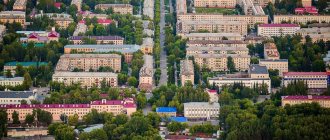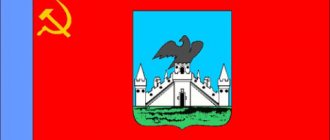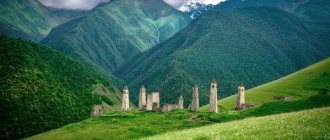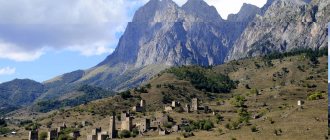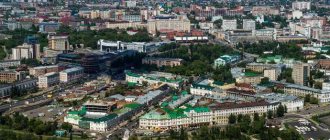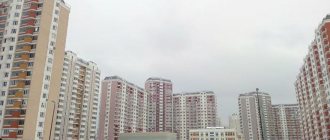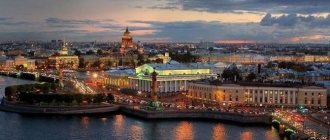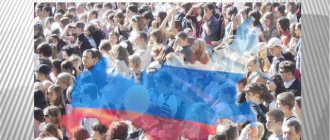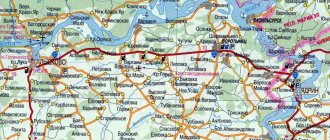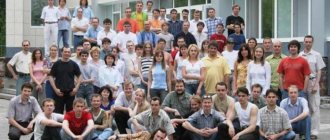General information and history of Vladikavkaz
The city of Vladikavkaz, as it is called in Ossetian - Dzaudzhikau - is the capital of the Republic of North Ossetia - Alania. It is located right at the very foot of the Caucasus Mountains. Its straight, green streets seem to abut snow-capped, majestic mountains. The northern latitude of Vladikavkaz according to geographical coordinates is 43°02″20″21′”, this is parallel to Rome, Toronto, Sofia. East longitude Greenwich is 44°40″45″16′, approximately parallel to Volgograd, Baghdad, Tbilisi. The height of Vladikavkaz above sea level is approximately 659 to 732 meters.
The city is located on both banks of the Terek River, seven km from its exit from the chasm, near the last spurs of the northern slope of the Main Caucasus Range. The Terek River, having escaped from the mountain gorges, flows in a fairly wide channel (the gullies sometimes reach five hundred meters) in several branches, the flow speed reaches 3.5 meters per second. In the vicinity of the city and on its outskirts, in addition to the Terek, several other small rivers flow: Kambileevka, Cherny Arkhon, Chernaya and other nameless mountain rivers and streams that form deep ravines and ravines. Many don't even have a name.
Vladikavkaz was founded on May 6, 1784 during the reign of Empress Catherine II as a Russian outpost, near the Ossetian village of Dzaudzhikau. Archaeological excavations show that approximately in the place where the fortress was founded - now the southern part of modern Vladikavkaz) on the elevated right bank of the Terek in the 7th-9th centuries. there was a wide settlement that belonged to the ancestors - the Alans. There was also a huge catacomb burial ground here. Items from this burial ground confirm that it was an Alan settlement.
Attractions
The rich history of the city of Vladikavkaz determines the presence of many cultural assets and attractions on its territory.
The city has a large park of culture and recreation, a children's park, and a palace of pioneers. The real decoration of Vladikavkaz is the Alley of Fountains. The leisure time of the younger generation is made more fun and educational by the unique children's railway, opened back in 1967, which also contributes to the training of young men in railway professions.
The real cultural center of the city is Mira Avenue, formerly called Alexandrovsky. It houses the Alexandrovsky Grand Hotel, the garden of the Vladikavkaz fortress, and a whole group of historical houses. There are also monuments to Lenin and Khetagurov.
Among other iconic buildings in Vladikavkaz, the Memorial of Glory, erected in 2005, and monuments to Pliev, Bulgakov, Barbashev, and Dzhibilov should be highlighted.
There are many wonderful sights in the capital of Ossetia, but its most important treasure is the population inhabiting Vladikavkaz. Photos of this wonderful city can be seen above.
Climate and ecology of Vladikavkaz
The climate in the Vladikavkaz region is temperate continental. Winter is mild, warm, short, and in recent years there has been little snow. Summer is warm, long, but often rainy. Vladikavkaz is conveniently located in the center of the Caucasus. There are picturesque places around, architectural monuments in the city itself, a healthy mild climate, natural resources of the city's surroundings. Nearby there are many almost inexhaustible sources of healing mineral waters and excellent drinking water, the energy of the Terek creates all the conditions for the prosperity of Vladikavkaz in the future.
The city of Vladikavkaz is not one of the twenty regions of the Russian Federation with a complex ecology, Vladikavkaz is not one of the fifty cities of Russia that have the worst ecology, however, one way or another, it is difficult to call the environmental situation in the capital city - and throughout the republic - prosperous, or rather, it’s unrealistic. Particular concern is provoked by the state of the air basin, where a lot of emissions accumulate, primarily from road transport.
The main problem of environmental pollution is created by those who do not comply with the necessary sanitary and environmental standards; they ignore all environmental requirements. As a result of illegal emissions carried out by the plant, not only the environment suffers, but also to a great extent the health of residents living in close proximity to the plant.
Geographical position
Let's immediately find out the geographical location of a given locality before we begin to study the indicators characterizing the city's population. Vladikavkaz is located within the North Caucasus at an altitude of 692 m. It stretches on both banks of one of the largest rivers in the region called Terek, not far from its source. The Daryal Gorge is located 30 km from the city.
The city is located in a temperate climate zone with a temperate continental climate. The average temperature of the warmest month of July is 20.7 degrees Celsius. The absolute maximum is 39.2 degrees. The average temperature of the coldest month of the year – February – is 5.6 degrees below zero, with an absolute minimum of 27.8 degrees. The average annual temperature in Vladikavkaz is 9.2 degrees above zero.
During the year, an average of 933 mm of precipitation falls in the capital of North Ossetia.
In general, the climate of the region is characterized by relatively mild winters and long but dry summers.
At the moment, this city is the administrative center of the Republic of Alania (North Ossetia), and it is located within this region.
Population of Vladikavkaz
The population of Vladikavkaz, according to the latest data for 2014, is 307 thousand people, which is more than 40% of the population of the republic. Of course, the actual number of city residents is higher, since internally displaced persons, refugees, and rural residents temporarily living in the city are not taken into account.
The city is very rich in ethnic composition. Ossetians, Russians, Georgians, Armenians, Kalmyks, Azerbaijanis and other various nationalities live here.
Due to the diversity of nationalities, conflict situations often occur. For example, an Ossetian guy decided to marry a Russian girl. When he informs his parents about his decision, they take everything with hostility, are categorically against it, and begin to introduce their son to other girls of Ossetian nationality.
In recent years, the population has decreased by about 3 thousand people over three years.
The educational level of the population is growing significantly. More and more people in Vladikavkaz are receiving higher education. Every year the city is replenished with lawyers, economists, doctors, and engineers with higher education. Most young people do not go to higher education to work in their specialty after graduation. Some cannot find a job, while others simply do not want to bother, and sitting on the couch, complain how difficult it is to find a place in this life. They just need to proudly show that they have a diploma, so as not to be worse than others. Students prefer to study and complete their sessions more for money than with their brains, and teachers welcome this.
There are several higher educational institutions in Vladikavkaz. Among them: North Ossetian University, Mountain Agrarian University, North Caucasus Technological University and North Ossetian Medical Academy, a number of research institutions, the Lyceum of Arts, technical schools and colleges, Suvorov Military School.
The age composition of the city is different, with more working-age population and children living there. There are not very many people of retirement age; they prefer to live in villages and garden.
Residents of Vladikavkaz are very hospitable people. If a guest comes to their house, the housewives begin to prepare treats, and according to tradition it should be three pies and chicken. It can be interesting to observe when minibuses begin to argue about who will pay for the fare. Everyone considers it their duty to pay for themselves and for others, so that later there will be no rumors of greed behind them. Even in Vladikavkaz, you can rarely see a girl or woman smoking in public. More than half of the smokers are women, but they do not advertise their bad habit and prefer to hide for smoke breaks in toilets, utility rooms and other secluded places.
Famous Vladikavkaz residents
The city has given Russia and the world many talented people. Among the famous residents and natives of this locality, it should be noted generals Issa Pliev, Georgy Khetagurov and Alexander Karasev, the founder of the GRU Hadji-Umar Mamsurov, heroes of the USSR and Russia Sergei Grigoryan, Kaurbek Toguzov, Lado Davydov, People's Artist of the Russian Federation Valery Gergiev.
But, naturally, this is not a complete list of outstanding people who were born or lived their lives in Vladikavkaz.
Districts and real estate of Vladikavkaz
Currently, on the territory of the city of Vladikavkaz there are four municipal districts: Iristonsky, North-Western, Industrial, North-Western. There are also thirteen settlements that are subordinate to him: the villages of Zavodskoy, Kartsa, Yuzhny, Chernorechensky, 1st Redant, village. 2nd Redant, Popov farm, villages Balta, Chmi, Ezmi, Lower Lars, Upper Lars, Terk.
For a long time, there have been various districts (slobodkas) in Vladikavkaz: Shaldon, Ossetinka, Molokanka, Vladimirskaya, Kurskaya. All sides are unique in their own way. But at the same time, they are similar. Everywhere you can see young people, teenagers standing or sitting on “cortofans” on “patches”, wiping the corners of houses or shops, with cigarettes and beer.
The largest areas in terms of their territory individually:
Ossetian settlement
Ossetian settlement or in common people Ossetian is located in the south of Vladikavkaz. Starts from the Ossetian Church. This includes the streets Kantemirova, Dimitrova, Pavlenko, Vaso Baeva and Gappo Baeva and others. Ossetian is located close to the city center. Good transport links, developed infrastructure, many supermarkets and schools. Along Pushkinskaya Street is the Spartak stadium, where Russian football matches were held. Housing prices in this area are quite high, although previously there lived people with average incomes who did not have enough money to buy a house or apartment in the city center.
Ossetian settlement
Molokanka
Molokanka is located in the southwest of Vladikavkaz. This side includes the following longest streets: Kotsoeva, Turgenevskaya, Ardonskaya, Goncharova. On Kotsoeva Street there is the largest bank in the city - Sberbank of Russia. The city administration building is located along Plieva Street. On Costa Avenue there is the main post office. There is also the Center for Aesthetic Cosmetology and the Central Department Store, which is currently undergoing reconstruction and expansion.
Molokanka
In this area there are many elite apartment buildings with parking lots and concierges on Karl Marx and Kotsoeva streets. If private houses are, then these are mainly two-story mansions. Therefore, housing prices on Molokanka are high.
Chinese Square
The area of Chinese Square has the official name Revolution Square and includes several sides: Malina, Shanghai, Turkhana. The square itself with the monument is located at the intersection of Pozharsky and Iristonskaya streets. The Chinese square began to be called in honor of the Chinese who appeared in Vladikavkaz even before the revolution and worked as laborers at a lead-zinc plant.
Chinese Square
City residents associate this area with drug addicts and alcoholics. It is believed that the bulk of thieves and hooligans live here, and most crimes are committed. A new Northern district is currently under active construction on Turkhan. In the future there will be a modern recreation park and a new kindergarten. But at the moment there are dilapidated houses in this area, from which the residents have been evicted, but the houses themselves have not been demolished. Groups of alcoholics and homeless people gather there, so it’s better not to go out in the evening.
Transport is very bad. On weekends, after 17.00, if you need to go somewhere, it is better to call a taxi; you may not get public transport. Often, when reading advertisements in newspapers about the purchase and sale of real estate, you can see a postscript: “Do not offer the Kitayskaya area.” All because of notoriety. Although, if you think about it carefully, in other areas of the city no fewer drug addicts live and the same number of crimes are committed, if not more.
Bama District
The Bama district in the north-west of Vladikavkaz can be called an anthill; here all the houses are multi-storey, closely packed to each other. There are many side streets on Bama, such as Mother-in-law's Language, KhPP (Cool Guys' Hut) and many others. This area has a very developed infrastructure. There are two large markets Alan and Vikalina, a shopping center Zabava with boutiques and supermarkets. In Zabava, for the first time in the city, an escalator staircase appeared, which, by the way, often does not work.
Nearby there is the Terek cinema, which is a favorite place for spending free time among city residents. Nearby is the Skazka children's center with modern attractions. Parents order the organization of holidays and birthdays for their children there for decent money, since the center is considered the most prestigious in Vladikavkaz.
Bama District
The surrounding places there are very beautiful, fountains, decorative flowers, benches do not leave anyone indifferent, so at any time of the year it is crowded near the Terek and Skazka. More recently, chain hypermarkets for household appliances and electronics Eldorado and M-Video were opened at BAM, which immediately gained popularity among residents and became serious competitors to the long-existing Arctic. Back in the Bama area, closer to Vesennaya Street, about two years ago the Ice Palace was finally opened, where schoolchildren and adults now like to spend time. The palace rents skates; you can bring your own. An hour of ice skating costs 100 rubles.
In addition to developed infrastructure, Bama has very good transport, unlike Chinese Square. You can go in any direction of the city without any problems. There are a lot of drug addicts and antisocial individuals living in the district's high-rise buildings, much more than in Turkhan or Shanghai, despite the fact that people's rumors say otherwise.
Center
The center of Vladikavkaz - everything is clear with the location. In the center the main streets are Mira Avenue, Kirova, Dzhanaeva, Lenina, Markova, Vatutina, Kuibysheva and others. There is a railway station on Markova Street, a dead-end station. The central market of the city became known to the whole world after tragic events - terrorist attacks, during which hundreds of people died.
The streets closest to the market are inhabited mainly by displaced people, Azerbaijanis, in general, those who trade in the same market. Their houses are in the private sector, in a common yard. The condition of the houses outside and inside is so wretched and terrible that it becomes scary how people can live like this.
Terek embankment
Among the attractions in the center is the park named after Kosta Khetagurov, which has children's attractions, many cafes and restaurants. There is a pond where you can ride catamarans. Recently, the entrance to the park was paid and practically with face control. People who aroused suspicion were not allowed in. They took these measures because they started breaking benches in the park, littering, and tearing flowers from the alleys. But this did not stop uncultured individuals. They began to break the fence to get into the park. Soon the paid entrance was canceled because the situation had not changed.
50th Anniversary of October Square
Another area of the 50th Anniversary of October Square, residents call it Kadievka, with the streets Kosta Avenue, Gugkaeva, Levanevsky, Leonov. The Mirage club, located on the corner of Gugkaev Street and Costa Avenue, can be called a treasure of the area. The Tax Inspectorate and the Pension Fund of Russia are located in Leonov. On Kesaev Street, about five years ago, the embankment along the Terek was improved and a restaurant was built. Now young people gather there, especially in the evening.
Shaldon
Shaldon is the eastern side of the city. This area is located close to the center. The largest streets in the area include Pushkinskaya, Kuibysheva, and Vatutina. The North Ossetian Medical Academy is located on Pushkinskaya. Behind it is the military town of Holtzman, where military personnel and their families live. Maybe the residents of Holtzman are different from others, or have a different worldview, or maybe the city authorities care about appearance, but the people there are very clean. There are beautiful flower alleys, garbage is thrown only into trash cans, the houses are neat, not shabby.
In Vladikavkaz there is Costa Avenue, which runs through the entire city from north to south. In the south, closer to the mountains, there is a zoo and a water station, a favorite vacation spot for townspeople in the summer.
Preserving the historical part of the city is one of the most pressing issues generated by our time. Since the mid-80s. the concept of “historical part” is already deliberately blurred: it is either suppressed or distorted. There is active development of this historical part, and it is being built in such a way that the authentic, historical is increasingly disappearing.
It can often be observed that not all private houses fit into the architecture and design of the city. When they are built, the municipal authorities do not interfere with the architecture of such private houses, they remove themselves from this moment, do not warn that there must be some kind of flower beds, they must look more noble.
Many residents of Vladikavkaz insist that the names of shops and shopping centers should be written in Ossetian. But it is unlikely that this will be fulfilled, because there are many Russians and other nationalities in the city who do not know the Ossetian language.
City infrastructure
The sanitary and hygienic condition of urban transport undoubtedly leaves much to be desired. In order to somehow improve the situation, it would be necessary to introduce penalties for both drivers and passengers for violations. This can significantly lead to improved transport conditions.
Factories, processing and waste disposal plants should be built or resumed in the city. It is necessary to install high-quality treatment facilities at all enterprises (for example, as was done at Electrozinc) that pollute the environment (exhaust gases, waste, combustion products). Install even more garbage containers in the courtyards of multi-story buildings, and organize regular garbage collection in private homes. Install more trash cans on city streets, particularly in crowded places. Of course, people themselves should throw garbage in the trash can, and not next to it; if they do not keep clean, these persistent violators should be fined.
In the city, many are actively constructing private households and renovating apartments. Neither municipal authorities nor house managements inform where to take out the garbage, and people take their garbage to the Sapitskaya booth area and throw it out there. State of improvement: the aesthetics of the urban environment is an indicator of the level of spiritual and material life of the city; this all speaks about the culture of its population.
In addition, it is necessary to tighten control of the state sanitary inspection and other government bodies over the condition of urban public transport, which is in an unsanitary and disrepair. Violators will be fined, even to the extent of confiscating licenses for this type of service.
The problem of the city is that there are no buses and trolleybuses. Until recently, trolleybuses operated on only two routes, but these were also removed.
Enterprises and work in Vladikavkaz
In Vladikavkaz there are enterprises of the metallurgical industry: “Electrozinc”, “Pobedit”, “Crystal”, the number of gas stations, transport and especially private transport is growing uncontrollably; many sources of increased electromagnetic radiation are concentrated. The above-mentioned sources of danger for all living things around and everywhere are joined by the long-term unsanitary condition of Vladikavkaz, where the main workers of the city's public utilities for many years are rain and wind. Street watering machines have disappeared.
In the old days, there were several enterprises of the military-industrial complex, large plants and factories in Vladikavkaz. Nowadays all this is gone. All of these businesses are closed, some of the buildings have been rented out as offices, and some remain empty and in disrepair. Of the working citizens, a large percentage is employed in various state and municipal services and in trade. There is almost no industrial production. Vladikavkaz (and North Ossetia as a whole) is one of the regions of Russia with the highest unemployment rates.
The largest enterprise, employing up to 2000 people, is Electrozinc. This is an enterprise with hazardous production and the townspeople are demanding its closure. Doctors have confirmed that with a large number of harmful factors, their danger seriously increases and adds up. Even our heavily distorted statistics cannot hide this. The level of lead production at JSC Electrozinc has seriously decreased in recent months. (17 times), however, the levels of production of cadmium, zinc, and sulfuric acid have not decreased and are even increasing.
There is a lot of controversy surrounding this venture. On the one hand, many residents want it to be closed altogether due to harmful substances. It is known that in the soil on the territory of the Industrial District of Vladikavkaz, the maximum permissible concentrations of cadmium, lead, and zinc are exceeded by almost 30 times. According to current sanitary standards, exceeding the MPC by 4-5 times is considered “very dangerous.” Will the prosecutor’s office officially announce the content of toxins in soil, fruits, vegetables, fish, meat, in the atmospheric air, and in people’s blood and hair after a new appeal from neighbors? But if Elektrozinc is closed, then about four thousand people will be left without work.
There is also the Carriage Repair Plant, the Izumrud distillery, the Fabek-Jeans garment factory, Baspik, all these enterprises with a small number of workers and finding employment in them is very problematic.
Shops, markets and other retail establishments provide great employment to the residents of Vladikavkaz. The Vikalina market, located on the western outskirts of the city, provides employment to several thousand people. Other markets are Alan, Globus, and Central. There is also a multi-storey shopping mall, a chain of stores "Magnit", shopping malls, "Poisk", "M-video" and others. All these shopping centers can be called practically the only place where people can find work. And not for long. Most employers do not consider it necessary to formally register their employees, who, after working for a month, may not see their salary, and in the worst case, they will still have to. When re-discounting goods, it often turns out that it was not sold and is out of stock.
Unemployment in Vladikavkaz is a stimulator for a significant increase in the number of cars. People earn or are even forced to earn a living by driving privately. Exhaust gases from a huge number of vehicles add lead and cadmium to the atmosphere, with the exception of benzopyrene.
Despite this sad situation, the head of the republic claims that the average salary in the city is 12,500 rubles, but in fact, the absolute majority barely reaches only 8,000 rubles.
Crime
Vladikavkaz does not stand out in the all-Russian crime rate. In the 90s there were many kidnappings for ransom, and there were criminal clashes between various groups. Among the high-profile crimes of recent years, one can note the murder of the current mayor of Vladikavkaz, Vitaly Karaev, and the murder of the former mayor, Kazbek Pagiev. Kazbek Pagiev was killed in 2008 on December 31 in Vladikavkaz. The murder happened around half past ten in the morning. As the neighbors said, the mayor was in a company Audi A6; he was slowly driving it out of the yard of his house, located on Marine Corps Street. When the car drove between high-rise buildings in a narrow passage, two people armed with machine guns with silencers ran up to it. One of the killers shouted to the driver, Kazbek Pagiev, to duck down, and they immediately began shooting at the mayor, who was sitting in the front seat. The official was killed on the spot. One of the bullets mortally wounded his driver.
It is impossible not to note the terrorist attacks, of which several occurred in Vladikavkaz. The biggest was the explosion at the Central Market, which occurred on March 19, 1999, when more than 50 people died. Another terrorist attack that took many lives occurred on November 6, 2008. Then they blew up a minibus at a crowded stop at noon, when there were a lot of people there. Near the market, shopping centers, university. In total, from 1999 to 2011, there were 11 cases of terrorist attacks in the city.
In 2011, the famous poet and public figure Shamil Dzhikaev was killed by a Muslim fanatic in Vladikavkaz. His body was found by police at approximately 15.00 near the village of Redant. The police went to the place indicated by unknown persons who called the duty station. Near the support of the cable car lay a corpse with a severed head barely hanging on to the neck. There were no signs of a struggle around. They just brought the corpse to that place by car and threw it away. The reason for his murder was a poem that some Muslims considered offensive to their religion. The verse was written after an incident with pilgrims from Ingushetia and Chechnya who performed the Hajj and desecrated their graves. Dzhikaev's alleged killer was soon killed because he offered armed resistance.
Corruption is a big problem in the city. Almost all issues when interacting with the authorities must be resolved with the help of a bribe. Family and friendly ties play an important role.
National composition
Now it’s time to look at which ethnic groups call Vladikavkaz their home. The ethnic population in the city is quite diverse.
Most of the residents of Vladikavkaz are representatives of the titular nation of the Republic of Alania - Ossetians. Their share in the total population of the capital is approximately 64%. The number of Russians in Vladikavkaz does not exceed 25%.
There are significantly fewer representatives of other nationalities: Armenians – 3.5%, Georgians – 2.2%, Ingush – 1.1%. The number of Azerbaijanis, Ukrainians and Greeks does not even reach 1% of the total number of people living in the North Ossetian capital. Kumyks, Turks, Kabardians, Chechens, Greeks, Gypsies, Tatars, Jews and even Koreans are present among the inhabitants inhabiting Vladikavkaz. The population of the city, as we see, is quite heterogeneous, although its main backbone is Ossetians and Russians.
